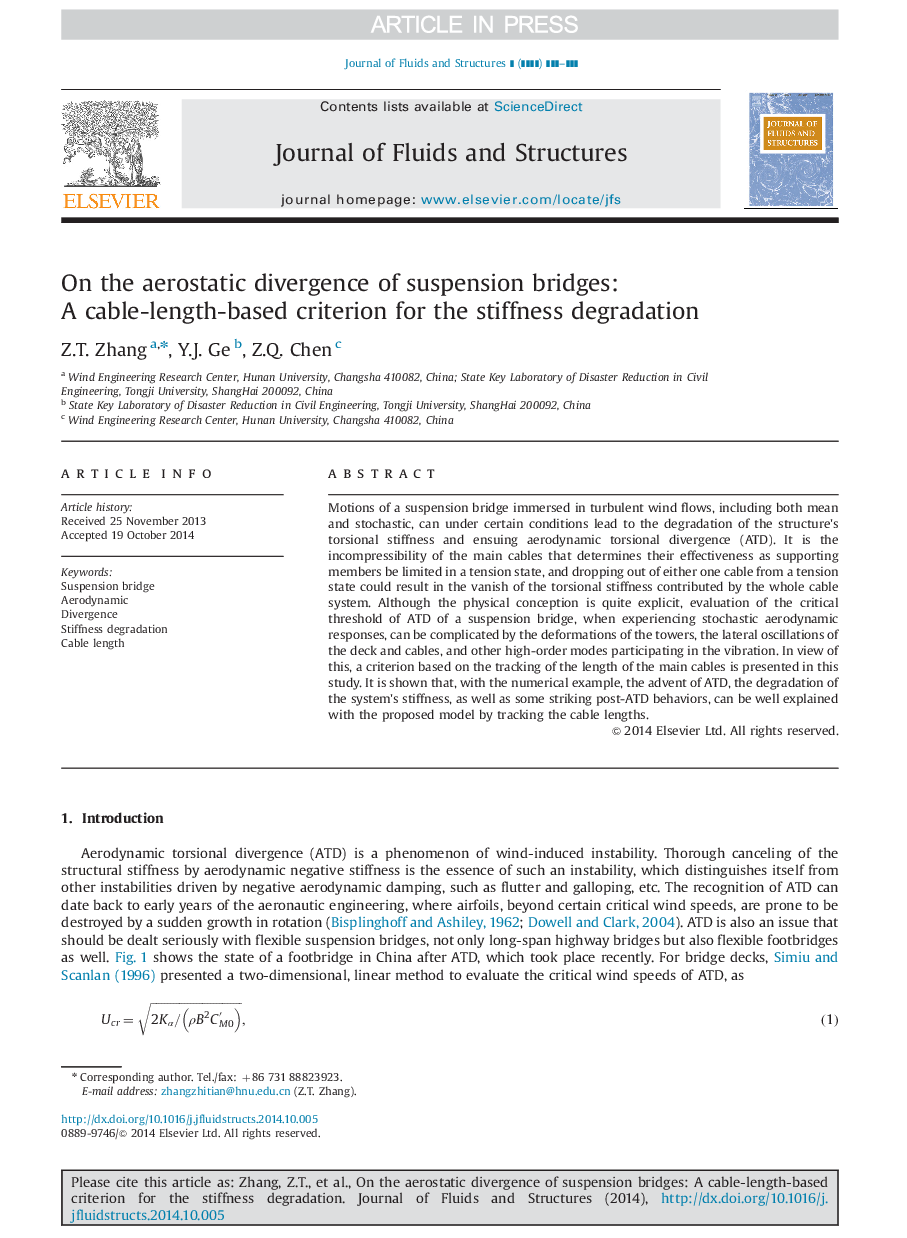| Article ID | Journal | Published Year | Pages | File Type |
|---|---|---|---|---|
| 7176024 | Journal of Fluids and Structures | 2015 | 12 Pages |
Abstract
Motions of a suspension bridge immersed in turbulent wind flows, including both mean and stochastic, can under certain conditions lead to the degradation of the structure׳s torsional stiffness and ensuing aerodynamic torsional divergence (ATD). It is the incompressibility of the main cables that determines their effectiveness as supporting members be limited in a tension state, and dropping out of either one cable from a tension state could result in the vanish of the torsional stiffness contributed by the whole cable system. Although the physical conception is quite explicit, evaluation of the critical threshold of ATD of a suspension bridge, when experiencing stochastic aerodynamic responses, can be complicated by the deformations of the towers, the lateral oscillations of the deck and cables, and other high-order modes participating in the vibration. In view of this, a criterion based on the tracking of the length of the main cables is presented in this study. It is shown that, with the numerical example, the advent of ATD, the degradation of the system׳s stiffness, as well as some striking post-ATD behaviors, can be well explained with the proposed model by tracking the cable lengths.
Related Topics
Physical Sciences and Engineering
Engineering
Mechanical Engineering
Authors
Z.T. Zhang, Y.J. Ge, Z.Q. Chen,
